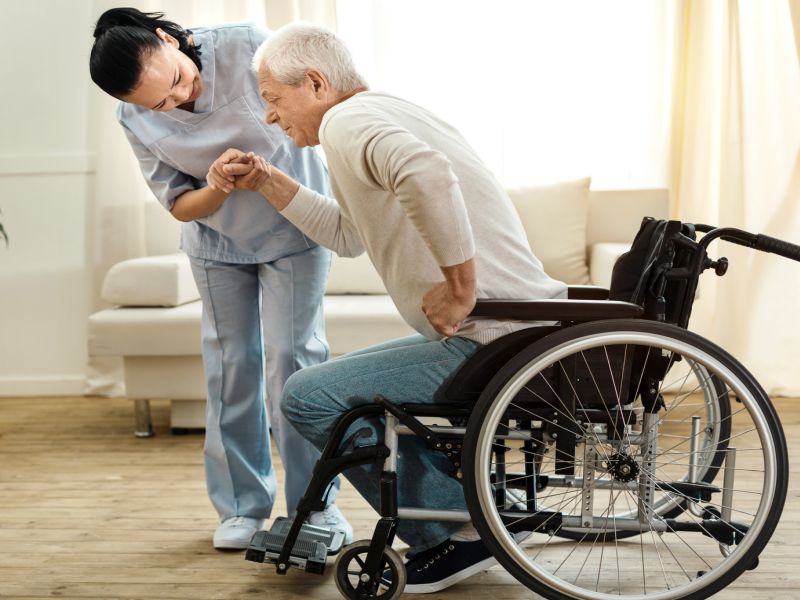Get Healthy!

- Posted June 12, 2019
Nearly 1 in 4 Home Care Aides Faces Verbal Abuse
Being yelled at or insulted is never easy. But it's a situation faced by about one-quarter of U.S. home health care workers, a new study finds.
Certain environments, such as caring for someone with dementia or working in a very cramped space, were linked to a higher risk of verbal abuse from patients or their kin.
"Our study found that aides frequently experience verbal abuse from the clients and their families," said the study's senior author, Margaret Quinn. She's director of the Safe Home Care Project at the University of Massachusetts, Lowell.
"There is increasing scientific evidence that verbal abuse, as well as physical abuse, can have harmful, long-term impacts on employees' health, such as depression and burnout, and on the stability of the workforce, such as high turnover, which is costly for employers and hard on those receiving care when an aide they've developed a relationship with does not return," she said.
Despite this study's findings, Quinn said most home care aides report a high level of job satisfaction and get great reward from helping people age in place in their homes with dignity.
Addressing the risk factors for verbal abuse uncovered by the study could improve relationships for both aides and patients, and hopefully lessen the risk of abuse, she suggested.
The need for home care is expanding quickly as baby boomers age. There were roughly 2.9 million home health and personal care workers in 2016. Another 1.2 million are projected to join the workforce by 2026.
Home care aides typically help people with mobility issues and activities of daily living, such as exercising, bathing, dressing, toileting, food prep and housecleaning. Most aides are women, and often are racial or ethnic minorities. They're often paid low wages, according to the researchers.
Because most work alone, they are particularly vulnerable to abuse, including physical abuse, verbal abuse or sexual harassment or assault.
The researchers looked specifically at verbal abuse, which is a risk factor for physical abuse. They surveyed nearly 1,000 home care workers, and the responses referred to more than 3,000 home care visits.
Verbal abuse included being yelled at or spoken to in an angry or humiliating way. It also included being made to feel bad about oneself; racial, ethnic or religious insults; and threats of violence.
Close to one in four said they had been verbally abused at least once during the past 12 months, and half of those people said they had experienced more than one type of verbal abuse. One in 20 said they had experienced all four kinds.
Home care workers who were verbally abused were 11 times more likely to be physically abused, the findings showed. About 7.5% said they had been physically abused.
Older workers -- over 48 -- were less likely to be abused. The study authors said this may be because they have more experience and perhaps better communication skills.
The researchers also said that their findings may underestimate the true extent of abuse, because workers forget over time and may make allowances for violence because of a client's age or condition.
But three factors stood out for increasing the risk of verbal abuse. They were:
- Having a patient with dementia (38% higher risk);
- Working in a home with little space to perform care (52% higher risk);
- Having an unpredictable work schedule (26% higher risk).
A clear care plan would likely help address these issues, Quinn said. A care plan lays out exactly what tasks a home care worker is expected to do and should also describe the home situation.
"Care plans should be designed in a way that considers basic safety for the aides. Does a family need to remove slip and fall hazards, like a throw rug? A care plan should protect the client and other people in the household, as well. It should all be written into the care plan," she said.
William Dombi, president of the National Association for Home Care and Hospice, agreed with Quinn that most home care workers, patients and families are happy with the relationship. Still, he said, abuse of all kinds is a major concern.
"The risk is there any time you bring an individual into another person's home," Dombi said.
A home care agency should have a policy spelling out what to do if staff is threatened, he added. But home care workers hired independently through places like Craigslist are likely much more vulnerable because there is no third-party oversight.
The bottom line, Dombi said, is that there "needs to be additional protection for workers and for clients."
The study was published online June 11 in Occupational and Environmental Medicine. Funding was provided by the U.S. National Institute for Occupational Safety and Health.
More information
Learn more about fostering a relationship between home health aides, family members and the care recipient from AARP.
SOURCES: Margaret Quinn, Sc.D., professor and director of the Safe Home Care Project, Zuckerberg College of Health Sciences, University of Massachusetts, Lowell; William Dombi, president, National Association for Home Care and Hospice; June 11, 2019, Occupational and Environmental Medicine, online
